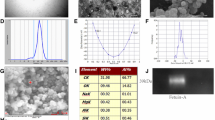Abstract
Our previous report showed that uropathogenic bacteria, e.g., Escherichia coli, are commonly found inside the nidus of calcium oxalate (CaOx) kidney stones and may play pivotal roles in stone genesis. The present study aimed to prove this new hypothesis by direct examining CaOx lithogenic activities of both Gram-negative and Gram-positive bacteria. CaOx was crystallized in the absence (blank control) or presence of 105 CFU/ml E. coli, Klebsiella pneumoniae, Staphylococcus aureus, or Streptococcus pneumoniae. Fragmented red blood cell membranes and intact red blood cells were used as positive and negative controls, respectively. The crystal area and the number of aggregates were measured to initially screen for effects of bacteria on CaOx crystal growth and aggregation. The data revealed that all the bacteria tested dramatically increased the crystal area and number of crystal aggregates. Validation assays (spectrophotometric oxalate-depletion assay and an aggregation–sedimentation study) confirmed their promoting effects on both growth (20.17 ± 3.42, 17.55 ± 2.27, 16.37 ± 1.38, and 21.87 ± 0.85 % increase, respectively) and aggregation (57.45 ± 2.08, 51.06 ± 5.51, 55.32 ± 2.08, and 46.81 ± 3.61 % increase, respectively) of CaOx crystals. Also, these bacteria significantly enlarged CaOx aggregates, with the diameter greater than the luminal size of distal tubules, implying that tubular occlusion might occur. Moreover, these bacterial effects were dose-dependent and specific to intact viable bacteria, not intact dead or fragmented bacteria. In summary, intact viable E. coli, K. pneumoniae, S. aureus, and S. pneumoniae had significant promoting effects on CaOx crystal growth and aggregation. This functional evidence supported the hypothesis that various types of bacteria can induce or aggravate metabolic stone disease, particularly the CaOx type.







Similar content being viewed by others
References
Bichler KH, Eipper E, Naber K, Braun V, Zimmermann R, Lahme S (2002) Int J Antimicrob Agents 19:488–498
Bichler KH, Eipper E, Naber K (2003) Urologe A 42:47–55
Miano R, Germani S, Vespasiani G (2007) Urol Int 79(Suppl 1):32–36
Coe FL, Evan A, Worcester E (2005) J Clin Invest 115:2598–2608
Pak CY (1998) Lancet 351:1797–1801
Nakagawa Y, Abram V, Parks JH, Lau HS, Kawooya JK, Coe FL (1985) J Clin Invest 76:1455–1462
Atmani F, Khan SR (1999) J Am Soc Nephrol 10(Suppl 14):S385–S388
Chutipongtanate S, Nakagawa Y, Sritippayawan S, Pittayamateekul J, Parichatikanond P, Westley BR, May FE, Malasit P, Thongboonkerd V (2005) J Clin Invest 115:3613–3622
Khan SR, Glenton PA, Backov R, Talham DR (2002) Kidney Int 62:2062–2072
Chutipongtanate S, Thongboonkerd V (2010) J Urol 184:743–749
Chutipongtanate S, Thongboonkerd V (2010) Chem Biol Interact 188:421–426
Yoshida O, Kiriyama T, Okada K, Okada Y, Watanabe H, Mishina T, Uchida M, Watanabe K, Tomoyoshi T, Takayama H (1984) Hinyokika Kiyo 30:191–198
Takeuchi H, Okada Y, Yoshida O, Arai Y, Tomoyoshi T (1989) Hinyokika Kiyo 35:749–754
Sohshang HL, Singh MA, Singh NG, Singh SR (2000) J Commun Dis 32:216–221
Tavichakorntrakool R, Prasongwattana V, Sungkeeree S, Saisud P, Sribenjalux P, Pimratana C, Bovornpadungkitti S, Sriboonlue P, Thongboonkerd V (2012) Nephrol Dial Transplant 27:4125–4130
Borghi L, Nouvenne A, Meschi T (2012) Nephrol Dial Transplant 27:3982–3984
Thongboonkerd V, Chutipongtanate S, Semangoen T, Malasit P (2008) J Urol 179:1615–1619
Nichols G, Byard S, Bloxham MJ, Botterill J, Dawson NJ, Dennis A, Diart V, North NC, Sherwood JD (2002) J Pharm Sci 91:2103–2109
Hirano S, Ohkawa M, Nakajima T, Orito M, Sugata T, Hisazumi H (1985) Hinyokika Kiyo 31:1387–1391
Freeman W, Bracegirdle B (1976) An advanced atlas of histology. Heinemann, London
Khan SR, Kok DJ (2012) In: Stoller ML, Meng MV (eds) Urinary stone disease. Humana, Totowa
Kim KM (1983) J Urol 129:855–857
Venkatesan N, Shroff S, Jeyachandran K, Doble M (2011) Urol Res 39:29–37
Bayer ME, Sloyer JL Jr (1990) J Gen Microbiol 136:867–874
Sheng X, Jung T, Wesson JA, Ward MD (2005) Proc Natl Acad Sci USA 102:267–272
Rabinovich YI, Esayanur M, Daosukho S, Byer KJ, El Shall HE, Khan SR (2006) J Colloid Interface Sci 300:131–140
Gross M, Cramton SE, Gotz F, Peschel A (2001) Infect Immun 69:3423–3426
Prokhorenko IR, Zubova SV, Ivanov AY, Grachev SV (2009) Int J Gen Med 2:33–38
Okada A, Yasui T, Fujii Y, Niimi K, Hamamoto S, Hirose M, Kojima Y, Itoh Y, Tozawa K, Hayashi Y, Kohri K (2010) J Bone Miner Res 25:2701–2711
Bigelow MW, Wiessner JH, Kleinman JG, Mandel NS (1997) Am J Physiol 272:F55–F62
Chutipongtanate S, Thongboonkerd V (2011) Biochem Biophys Res Commun 406:396–402
Acknowledgments
We are grateful to Somporn Srifuengfung and Chanwit Tribuddharat for their advice on microbiological techniques, and to Sakdithep Chaiyarit and Teerada Homvises for their technical support. This study was supported by the Office of the Higher Education Commission and Mahidol University under the National Research Universities Initiative (to V.T.), the Thailand Research Fund (MRG5380018 to S.C. and RTA5380005 to V.T.), and the Faculty of Medicine Siriraj Hospital. W.C. is supported by the Royal Golden Jubilee PhD Program, and V.T. is also supported by the Chalermphrakiat grant and the Faculty of Medicine Siriraj Hospital.
Author information
Authors and Affiliations
Corresponding author
Electronic supplementary material
Below is the link to the electronic supplementary material.
Rights and permissions
About this article
Cite this article
Chutipongtanate, S., Sutthimethakorn, S., Chiangjong, W. et al. Bacteria can promote calcium oxalate crystal growth and aggregation. J Biol Inorg Chem 18, 299–308 (2013). https://doi.org/10.1007/s00775-012-0974-0
Received:
Accepted:
Published:
Issue Date:
DOI: https://doi.org/10.1007/s00775-012-0974-0




